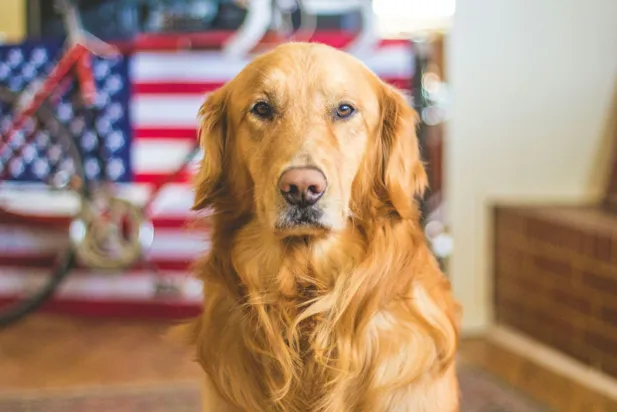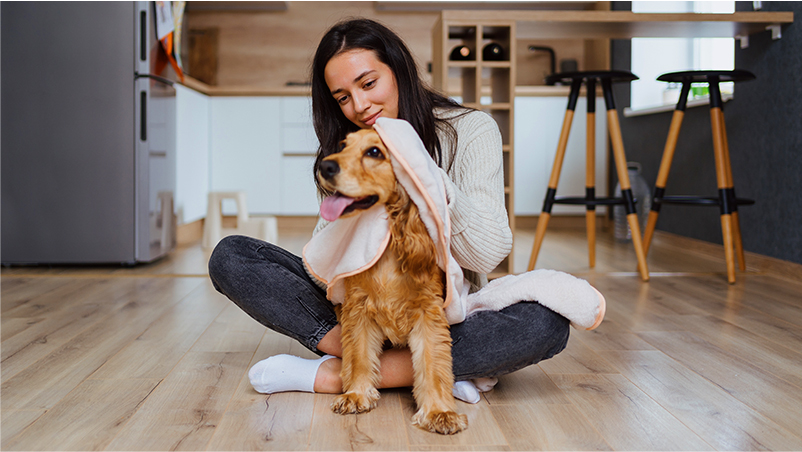Caring for a dog with sensitive skin can feel like walking a tightrope. You want them to look and feel clean, but a simple bath can sometimes leave them itchy, irritated, or uncomfortable. Many dog owners face the same struggle: how do you keep your pup’s coat fresh without triggering skin problems?
In this guide, you’ll discover practical tips to make bath time smoother for both you and your dog. From choosing the right products to learning the best bath-time techniques, this post will help you keep your dog’s delicate skin happy and healthy.
Understanding Your Dog’s Skin
Some dogs have skin that’s as sensitive as a diva’s mood on a Monday morning. If your dog is prone to itchiness, redness, or dry patches, they might fall into this delicate category. Sensitive skin in dogs can be caused by various factors, including allergies, environmental irritants, or even breed-specific traits. Some breeds, like Bulldogs or Retrievers, are more prone to skin issues, while others may develop sensitivities over time due to repeated exposure to certain grooming products or changes in their diet.
Recognising the signs of sensitive skin is key to keeping your dog comfortable. If your dog starts scratching more than usual after a bath, or if you notice redness, flaky skin, or even hair loss in certain areas, it’s probably time to rethink their grooming routine. Dogs with sensitive skin are often more reactive to environmental triggers like pollen, dust mites, or even grass, so it’s essential to watch for these signs in between bath times as well.
Sensitive skin needs extra attention, and it’s not just about what you put on it — it’s about how you care for it from the start. A dog’s skin acts as a barrier to protect them from the outside world, and when that barrier is weakened, it can lead to discomfort and even infections. Understanding their skin type is the first step in choosing products and methods that will make bath time a breeze rather than a battle. The right approach can prevent further irritation and keep their coat healthy and happy.
Choosing the Right Bathing Products
When it comes to bath time, not all products are created equal. If your dog has sensitive skin, using just any shampoo won’t do them any favours — in fact, it could make things worse. The wrong shampoo can strip their coat of natural oils, leaving their skin dry, flaky, and more prone to irritation. That’s why you want to opt for something gentle, and that’s where dog shampoo for sensitive skin comes in handy. These specially formulated shampoos are designed to soothe irritation while keeping your dog’s coat clean, soft, and healthy.
Look for products made with natural, soothing ingredients. Oatmeal, for example, is well known for its ability to calm itching and irritation, while aloe vera offers gentle hydration to the skin. Other helpful ingredients include chamomile, which has anti-inflammatory properties, and coconut oil, which helps to lock in moisture. These natural ingredients can provide a much-needed break for your dog’s skin, reducing the risk of post-bath flare-ups.
On the other hand, it’s just as important to avoid shampoos that contain harsh chemicals, artificial fragrances, or dyes, as they can strip the skin of its natural defences. Sulphates, parabens, and alcohol-based products should all be on your no-go list. Even though these shampoos might leave your dog smelling like a fresh spring meadow, they often do more harm than good when it comes to sensitive skin. A mild, hypoallergenic shampoo is a much safer bet and will give your pup the clean they need without the itch that often follows.
By selecting the right products, you’ll be setting your dog up for a more comfortable bath time experience and healthier skin overall. Plus, it’ll make the process less stressful for both you and your furry friend, ensuring that bath time is something to look forward to, not dread.
Bath-Time Techniques to Prevent Irritation
Giving your dog a bath should be a calming, bonding experience — not something that leaves them scratching or uncomfortable afterward. How you bathe your dog can make a huge difference, especially if they have sensitive skin. A few simple tweaks to your routine can go a long way in preventing irritation and making bath time a breeze.
Start with lukewarm water. It might seem obvious, but the water temperature can make or break your dog’s bath. Water that’s too hot can dry out their skin and strip away essential oils, while cold water can leave them shivering and tense, making the experience more stressful than it needs to be. Aim for a comfortably warm temperature that mimics the feeling of a nice day outside.
Once you’ve got the water right, focus on being gentle. Use your hands or a soft washcloth to lather the shampoo into their coat without scrubbing too hard. Vigorous scrubbing might feel like it’s getting them extra clean, but for dogs with sensitive skin, it can lead to irritation. Instead, gently massage the shampoo into their fur, paying extra attention to areas like the belly, paws, and behind the ears, where skin tends to be most delicate.
Rinsing is another key step. You’ll want to make sure every bit of shampoo is thoroughly rinsed out. Any residue left behind can cause irritation, even if you’re using a sensitive-skin-friendly product. Rinse your dog’s coat twice to be sure there’s nothing lingering on their skin, and take extra care around their eyes and ears to avoid any accidental stinging.
Drying is just as important as the washing process. Pat your dog dry with a soft towel rather than rubbing vigorously. This helps avoid further irritation and keeps their coat from frizzing up. If you use a blow dryer, stick to a low, cool setting, and hold it a few inches away to prevent drying out their skin. A little extra care at each step will ensure your dog feels pampered, not pestered, by the end of their bath.
Post-Bath Care for Sensitive Skin
Once bath time is over, the care doesn’t stop. What you do after the bath is just as important as the washing itself, especially for dogs with sensitive skin. Post-bath grooming is all about maintaining that fresh coat while ensuring their skin stays healthy and irritation-free.
Start with brushing. A good brush-through after a bath helps to remove any loose fur and prevents matting, which can lead to further skin irritation. Use a brush designed for your dog’s coat type — softer brushes for short-haired breeds and slicker brushes for those with longer or curly coats. Brushing not only keeps their coat smooth but also distributes natural oils, which are key for keeping their skin hydrated and healthy.
Next up is checking for any lingering signs of irritation. Even if you’ve taken every precaution during bath time, some dogs may still show signs of sensitivity afterward. Keep an eye out for redness, dryness, or scratching over the next day or two. If you notice anything unusual, applying a gentle, hypoallergenic moisturiser can help soothe their skin. Products with ingredients like coconut oil or shea butter are great for locking in moisture without clogging pores.
You might also consider using a leave-in conditioner or a light mist that’s specially formulated for dogs with sensitive skin. These products can help maintain moisture levels between baths and protect against external irritants like dust or pollen that your dog might encounter on their daily walks.
The post-bath routine is all about keeping things low-maintenance but effective. By giving your dog’s coat a little extra love and attention after their bath, you can help ensure that their skin stays happy and irritation-free until the next wash.
Keeping Your Dog’s Coat Healthy Between Baths
Caring for a dog with sensitive skin doesn’t stop at bath time. The way you maintain their coat between baths plays a big role in keeping their skin irritation-free and their coat looking shiny and fresh. Regular grooming habits can help reduce the need for frequent baths, which is a win for both you and your dog.
Brushing is a must, and not just because it keeps their coat looking tidy. Regular brushing helps to remove dirt, debris, and loose fur that can build up and cause irritation over time. It also prevents matting, which can tug at the skin and lead to discomfort or even sores in extreme cases. Aim to brush your dog a few times a week — daily if they’ve got a longer coat. This keeps their fur in good shape and also stimulates the skin, encouraging natural oil production that keeps their coat hydrated.
You can also take a more natural approach to keeping their coat and skin healthy by incorporating certain oils into their routine. A light application of coconut oil or fish oil, either directly to their coat or added to their diet, can help keep their skin soft and hydrated. These oils are packed with essential fatty acids that nourish the skin from the inside out, making them a great addition to your grooming toolkit.
Finally, don’t underestimate the role diet plays in your dog’s skin health. A balanced diet rich in omega-3 and omega-6 fatty acids can work wonders for sensitive skin. Many commercial dog foods offer formulas specifically designed for skin health, but you can also speak to your vet about adding supplements if needed. A healthy coat starts from the inside, and what your dog eats can have a big impact on how their skin feels.
By sticking to a consistent grooming routine and paying attention to what your dog consumes, you can keep their sensitive skin in check between baths, making the whole process easier for both of you.
Conclusion
Caring for a dog with sensitive skin might require a little extra attention, but it’s well worth the effort. By choosing the right products, like dog shampoo for sensitive skin, and adopting gentle bath-time techniques, you can keep your dog’s coat fresh and their skin happy. Remember to give their coat some TLC between baths with regular brushing and a balanced diet that supports skin health.
Sensitive skin doesn’t have to mean high maintenance. With a few thoughtful adjustments, you’ll have a happier, healthier pup — and bath time will go from stressful to serene.






